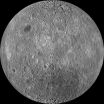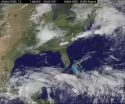(Press-News.org) WASHINGTON – Much as human DNA can be used as evidence in criminal trials, genetic information about microorganisms can be analyzed to identify pathogens or other biological agents in the event of a suspicious disease outbreak. The tools and methods used to investigate such outbreaks belong to an emerging discipline known as microbial forensics, but the field faces substantial scientific and technical challenges, says a new report from the National Research Council. The report offers an initial set of research priorities for advancing the capabilities needed to make microbial forensics a more effective tool for identifying and attributing the sources of biothreats. Many of these challenges are shared by other disciplines, such as medicine and public health, so bridging the gaps in microbial forensics could also strengthen capabilities and knowledge in these other areas, the report adds.
Biological outbreaks can include natural occurences, accidental or negligent releases from laboratories, biocrimes aimed at individuals or small groups, or acts of bioterrorism and biowarfare intended to affect large populations. In all scenarios, the primary goal of microbial forensics and the public health system is to protect the health and safety of the public, which requires that the microorganism be identified quickly and its source located to stop further cases of exposure. However, the methods and processes involved in microbial forensics investigations must also meet legal standards for evidence for use in law enforcement or for policy decisions when outbreaks cross national boundaries.
Events that require application of the full range of microbial forensics techniques, such as an act of bioterrorism, are likely to be rare. Natural and accidental infectious disease outbreaks occur more frequently, and most will first be recognized through the public health infrastructure. By creating, testing, and validating methods that are compatible with both rare and common occurences, detection and response will not be delayed by lack of availability of and familiarity with tools and systems when a rare event does happen, the report says.
The committee that wrote the report identified needs in basic science, technologies, analytic methods, data sharing, and training and education, and grouped them in terms of how difficult it will be to achieve them and whether there are existing efforts that can be drawn upon.
One set of needs includes those that are especially technologically challenging or that require long lead times. For example, there is a dearth of even the most basic information about many microorganisms and a crucial need for high-confidence methods to distinguish among natural, accidental, and deliberate disease outbreaks. A needed international effort to identify, monitor, and characterize more microbial species should start with known pathogens and expand to include close relatives and emerging pathogens, and more systematic and comprehensive reference collections and databases should be established. International political and scientific communities should explore how to share microbial forensic data.
A second set of needs includes those that could take advantage of ongoing efforts, especially those that are common to both microbial forensics and public health. Among these, priorities are research on pathogenicity and immune responses; improved global disease monitoring and surveillance in humans, plants, and animals; improved global access to molecular diagnostic techniques; and refinement of bioinformatics and statistical methods for evaluating evidence.
The third set of needs encompasses those with either relatively short lead times to make substantial progress or that can take advantage of existing markets that will provide incentives for industry to produce what is required. The development of faster, cheaper, and more reliable sequencing technologies, a compilation of all protocols being used and whether and how they have been validated, and the expansion of technical training fall into this category.
Additional challenges arise when a microbial forensics investigation crosses international boundaries. Currently, there is no international agreement or standard that governs what would be shared in a given set of circumstances. The need for access to scientific resources will have to be weighed against security and law enforcement concerns, and an international framework is required to both encourage and reward data sharing, the report says.
INFORMATION:
The study was sponsored by the U.S. Navy, U.S. Department of State, and National Academy of Sciences. The National Academy of Sciences, National Academy of Engineering, Institute of Medicine, and National Research Council make up the National Academies. They are private, independent nonprofit institutions that provide science, technology, and health policy advice under a congressional charter granted to NAS in 1863. The National Research Council is the principal operating arm of the National Academy of Sciences and the National Academy of Engineering. For more information, visit http://national-academies.org. A committee roster follows.
Contacts:
Lauren Rugani, Media Relations Officer
Christina Anderson, Media Assistant
Office of News and Public Information
202-334-2138; e-mail news@nas.edu
http://national-academies.com/newsroom
Twitter: @NAS_news and @NASciences
RSS feed: http://www.nationalacademies.org/rss/index.html
Flickr: http://www.flickr.com/photos/nationalacademyofsciences/sets
NATIONAL RESEARCH COUNCIL
Division on Earth and Life Studies
Board on Life Sciences
Committee on Science Needs for Microbial Forensics:
Developing an Initial International Roadmap
John D. Clements (chair)
Professor and Chair
Department of Microbiology and Immunology
Tulane University School of Medicine
New Orleans
Munirul Alam
Senior Scientist
International Centre for Diarrhoeal Disease Research
Dhaka, Bangladesh
Bruce Budowle
Director, Institute of Applied Genetics, and
Professor, Department of Molecular and Medical Genetics
Health Science Center
University of North Texas
Fort Worth
Jongsik Chun
Associate Professor of Biology
Seoul National University
South Korea
Rita R. Colwell*
Distinguished University Professor
University of Maryland
College Park; and
Distinguished University Professor
Bloomberg School of Public Health
Johns Hopkins University
Baltimore
Nancy D. Connell
Professor of Medicine and Director
Center for the Study of Emerging and Re-emerging Pathogens
Division of Infectious Disease
Department of Medicine
Rutgers New Jersey Medical School
Newark
Paul Keim
Cowden Endowed Chair in Microbiology and Arizona Regents Professor
Northern Arizona University
Flagstaff
Juncai Ma
Assistant Director
Institute of Microbiology
Chinese Academy of Sciences
Beijing
Alemka Markotic
Professor
Medical School of the University of Rijeka
Croatia
Geoffrey Smith
Professor and Wellcome Trust Principal Research Fellow
Emmanuel College
Cambridge University
United Kingdom
STAFF
Frances E. Sharples
Study Director
* Member, National Academy of Sciences END
Science and technology advances in microbial forensics needed to better prepare
2014-06-09
ELSE PRESS RELEASES FROM THIS DATE:
Specific protein may help beta cells survive in type 1 diabetes
2014-06-09
In the healthy pancreas of someone without type 1 diabetes (T1D), the hormone insulin (essential for turning food into energy) is produced, stored, and released in a normal "factory-like" process within pancreatic beta cells in response to glucose in the diet. Early in the course of T1D, however, excessive or pathologic stress in beta cells compromises their ability to properly secrete insulin, triggering a cascade of events ultimately contributing to the beta cell death. Over the past several years, JDRF-funded researchers have found evidence that beta cell stress may ...
55-year old dark side of the moon mystery solved
2014-06-09
The Man in the Moon appeared when meteoroids struck the Earth-facing side of the moon creating large flat seas of basalt that we see as dark areas called maria. But no "face" exists on farside of the moon and now, Penn State astrophysicists think they know why.
"I remember the first time I saw a globe of the moon as a boy, being struck by how different the farside looks," said Jason Wright, assistant professor of astrophysics. "It was all mountains and craters. Where were the maria? It turns out it's been a mystery since the fifties."
This mystery is called the Lunar ...
Tangled path of Alzheimer's-linked brain cells mapped in mice
2014-06-09
By studying laboratory mice, scientists at The Johns Hopkins University have succeeded in plotting the labyrinthine paths of some of the largest nerve cells in the mammalian brain: cholinergic neurons, the first cells to degenerate in people with Alzheimer's disease.
"For us, this was like scaling Mount Everest," says Jeremy Nathans, Ph.D., professor of molecular biology and genetics, neuroscience, and ophthalmology at the Johns Hopkins University School of Medicine. "This work reveals the amazing challenges that cholinergic neurons face every day. Each of these cells ...
NASA's TRMM satellite analyzes Mexico's soaking tropical rains
2014-06-09
VIDEO:
This movie of NOAA's GOES-East satellite imagery shows the movement of System 90L over land and dissipating between June 6 and June 7 at 2000 UTC (4 p.m. EDT)....
Click here for more information.
The movement of tropical storm Boris into southern Mexico and a nearly stationary low pressure system in the southern Gulf of Mexico caused heavy rainfall in that area. NASA and the Japan Aerospace Exploration Agency's Tropical Rainfall Measuring Mission satellite known as TRMM ...
A new methodology developed to monitor traffic flow
2014-06-09
"If we know not only the volume of the traffic but also the way in which the flow is taking place, we can detect when the traffic is undergoing a significant change. This information can be used, for example, when decisions are taken about signs (traffic lights, directions, etc.), road capacity, and other aspects," explained Fermín Mallor, Prof of the Department of Statistics and Operational Research.
What is new about this research is that it applies the so-called curve statistics to the specific problem of traffic control or monitoring. The use of the methodology is ...
NHAES research: New England lakes recovering rapidly from acid rain
2014-06-09
DURHAM, N.H. – For more than 40 years, policy makers have been working to reduce acid rain, a serious environmental problem that can devastate lakes, streams, and forests and the plants and animals that live in these ecosystems. Now new research funded by the NH Agricultural Experiment Station (NHAES) at the University of New Hampshire College of Life Sciences and Agriculture indicates that lakes in New England and the Adirondack Mountains are recovering rapidly from the effects of acid rain.
Researchers found that sulfate concentration in rain and snow declined by more ...
Angry faces back up verbal threats, making them seem more credible
2014-06-09
We've all been on the receiving end of an angry glare, whether from a teacher, parent, boss, or significant other. These angry expressions seem to boost the effectiveness of threats without actual aggression, according to research published in Psychological Science, a journal of the Association for Psychological Science.
The research findings show that angry expressions lend additional weight to a negotiator's threat to walk away from the table if his or her demands aren't met, leading the other party in the negotiation to offer more money than they otherwise would have.
"Our ...
Distance from a conflict may promote wiser reasoning
2014-06-09
If you're faced with a troubling personal dilemma, such as a cheating spouse, you may think about it more wisely if you consider it as an outside observer would, according to research forthcoming in Psychological Science, a journal of the Association for Psychological Science.
"These results are the first to demonstrate a new type of bias within ourselves when it comes to wise reasoning about an interpersonal relationship dilemma," says psychology researcher and study author Igor Grossmann of the University of Waterloo in Canada. "We call the bias Solomon's Paradox, ...
Penn Medicine at the International Congress of Parkinson's Disease and Movement Disorders
2014-06-09
Penn Medicine researchers will be among the featured presenters at the 18th International Congress of Parkinson's Disease and Movement Disorders in Stockholm, Sweden, from Sunday, June 8 to Thursday, June 12, 2014.
Matthew Stern, MD, director of the Parkinson's Disease and Movement Disorders Center in the Department of Neurology and current president of the International Parkinson's Disease and Movement Disorders Society, will chair a plenary session entitled "New insights into the pathology, progression, and heterogeneity of Parkinson's disease."
John Q. Trojanowski, ...
What causes garlic breath? (video)
2014-06-09
WASHINGTON, June 9, 2014 — Garlic is good for your body, great for your taste buds, but terrible for your breath. In the American Chemical Society's latest Reactions video, we look at the plant beloved by chefs and feared by vampires. Once again we teamed up with the Compound Interest blog to break down the chemistry of garlic, and how to beat the bad breath it causes. The video is available at http://youtu.be/cAWLQ_4DphI.
INFORMATION:
Subscribe to the series at Reactions YouTube, and follow us on Twitter @ACSreactions to be the first to see our latest videos.
The ...



